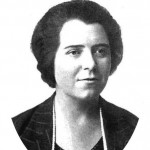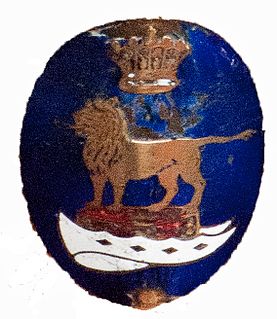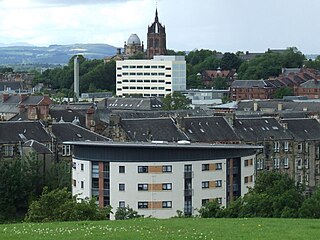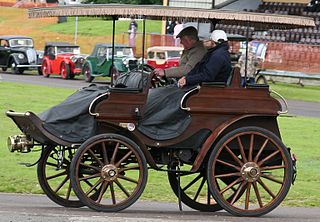
Talbot or Clément-Talbot Limited was a London automobile manufacturer founded in 1903. Clément-Talbot's products were named just Talbot from shortly after introduction, but the business remained Clément-Talbot Limited until 1938 when it was renamed Sunbeam-Talbot Limited. The founders, Charles Chetwynd-Talbot, 20th Earl of Shrewsbury and Adolphe Clément-Bayard, reduced their financial interests in their Clément-Talbot business during the First World War.
Major Frank Bernard Halford CBE FRAeS was an English aircraft engine designer. He is best known for the series of de Havilland Gipsy engines, widely used by light aircraft in the 1920s and 30s.

Sir Henry O'Neal de Hane Segrave was an early British pioneer in land speed and water speed records. Segrave, who set three land and one water record, was the first person to hold both titles simultaneously and the first person to travel at over 200 miles per hour (320 km/h) in a land vehicle. He died in an accident in 1930 shortly after setting a new world water speed record on Windermere in the Lake District, England. The Segrave Trophy was established to commemorate his life.

John Marston (1836–1918) was a successful Victorian bicycle, motorcycle and car manufacturer and founder of the Sunbeam company of Wolverhampton. His company was also one of the country's largest manufacturers of japanware and he was responsible for building 'Seagull' outboard engines for marine use and also for starting the Villiers engineering company. He was Mayor of Wolverhampton for two consecutive years and died in 1918 aged 82.
George Johnston (1855–1945) was a Scottish engineer. He was the son of the Reverend James Johnston, of Springburn's United Presbyterian Church. George spent the early part of his career in locomotive engineering before designing and constructing Scotland's first automobile, the Mo-Car, which led to the formation of the Arrol-Johnston Car Company Ltd.

Galloway was a Scottish car maker founded in 1920 as a subsidiary company to Arrol-Johnston. It was based at first at Tongland, Kirkcudbrightshire, and from 1923 at Heathall, Dumfries. It closed in 1928.

Sunbeam-Talbot Limited was a British motor manufacturing business. It built upmarket sports-saloon versions of Rootes Group cars from 1935 to 1954. As Clément-Talbot Limited it had made Talbot cars since 1902.

The Gladiator Cycle Company, Clément-Gladiator, was a French manufacturer of bicycles, motorcycles and cars based in Le Pré-Saint-Gervais, Seine.

The Sunbeam-Talbot 90 is a sports saloon produced and built by Sunbeam-Talbot from 1948 to 1954 and continued as the Sunbeam Mk III from 1954 to 1957.

The Sunbeam 3-litre is a heavy 26 long cwt sports car introduced by Sunbeam in October 1925 at the London Motor Show, and was offered from 1926 until 1930. It was seen at the time and subsequently as the retort of Louis Hervé Coatalen, Sunbeam's energetic chief engineer, to the Bentley 3 Litre which by then was beginning to make its mark, having won at Le Mans earlier that year.

Dorothée Aurélie Marianne Pullinger, MBE was a pioneering automobile engineer and businesswoman.
A Darracq and Company Limited owned a French manufacturer of motor vehicles and aero engines in Suresnes, near Paris. The French enterprise, known at first as A. Darracq et Cie, was founded in 1896 by Alexandre Darracq after he sold his Gladiator Bicycle business. In 1902, it took effect in 1903, he sold his new business to a privately held English company named A Darracq and Company Limited, taking a substantial shareholding and a directorship himself.
Beardmore-Halford-Pullinger (BHP) were aircraft engines used in production between 1916 and 1918. The engines were used on many notable First World War aircraft, such as the Airco DH.4, DH.9, DH.10, de Havilland DH.15 and Avro 529 aircraft.

Clément-Talbot Limited was a British motor vehicle manufacturer with its works in Ladbroke Grove, North Kensington, London, founded in 1902. Rootes renamed it Sunbeam-Talbot Limited in 1938.
Darracq Motor Engineering Company Limited was a London importer, retailer and wholesaler of French-made Darracq and Talbot automobiles, a coachbuilder making regular production runs of bodies for S T D group products and a property holding company on behalf of its parent S T D Motors Limited.

Automobiles Darracq France was a manufacturer of motor vehicles and aero engines in Suresnes, near Paris. The enterprise, known at first as A Darracq et Cie, was founded in 1896 by successful businessman Alexandre Darracq.

The Sunbeam-Talbot 80 is a 4-door 4-light sports saloon which was produced by English manufacturer Sunbeam-Talbot from 1948 to 1950.




























